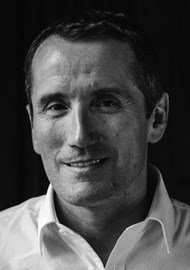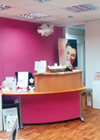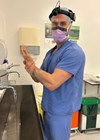
As surgeons we must have all dreamt of owning our own facility. The perfect dream of a stand-alone private hospital with the entire patient journey seamlessly mapped out. It would offer unparalleled continuity of care – the same team doing the same treatments day-in day-out, creating a well-trodden, safe and stress-free clinical pathway.
Imagine the efficiency savings and safety benefits? Imagine not having to reinvent the wheel from a metaphorical raw block of stone every time you work with an unfamiliar team – we have ALL been there, right? Imagine the joy of working with handpicked colleagues whom you enjoy working with and who also enjoy working with you.
Having undertaken a fellowship in a world-class private surgical facility in the USA for a year I knew that this was possible. I saw surgical teams performing superlatively when the shackles and restraints of management were eased. I saw old surgeons who still enjoyed going to work because they hadn’t been worn down by having to go into battle every single day of their working lives. A pipedream or a beautiful reality? I was about to find out.
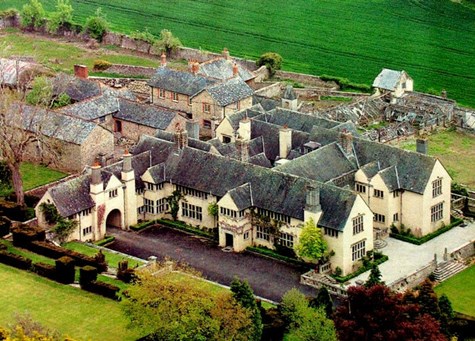
By 2008 I had been an NHS consultant for eight years, during this time I had also built up my private practice. I was running two CQC registered clinics in Plymouth and Cheltenham and commuted between the two. I struggled to accommodate all my surgical patients within the constraints of available theatre lists at various private hospitals and my life involved constantly running from one operating room to another. To be completely honest I enjoyed the buzz of the commute and the early starts. I enjoyed working with all the different teams and the variety of locations. But it was unsustainable long-term. I had very little control of when I operated, who I worked with, the information and advice given to the patient, and how much the patient paid. Furthermore, I hated the awkwardness of having to negotiate with hospital management every time I needed to make a minor ‘courtesy’ adjustment for a patient (all of us have a revision rate). The only part of the patient journey that I truly controlled was the time spent in the consulting room and to a lesser extent in the operating theatre. All it would take was someone (usually someone completely unaccountable) ordering the wrong implant or a long-distance complication and life could rapidly get stressful. This didn’t happen often but when it did, I would start thinking about how I would design things differently if I could restructure my professional life and take control of my working environment.
So, I started looking for a location where I could establish a surgery centre under my own roof and let patients come to me. I went to visit a few examples of similar facilities in other European countries. Some key questions needed answers. What kind of building? A thermally efficient newbuild or a characterful refurbishment project? Initially I looked at a newbuild in a business park in Plymouth. I approached the Regional Development Agency (RDA) but they didn’t understand the growing aesthetic market and extra value that a stand-alone centre could bring to the Southwest in terms of employment, training and business. Regardless of the RDA’s negativity and lack of support I expressed an interest in a plot on the Plymouth International Business Park and paid £14k for architect drawings. Soon afterwards I found out that a competitor hospital group had approached the RDA separately and gazumped me for the very same plot of land that I had expressed an interest in.
There were similar available plots either side that they could have taken but the RDA and the hospital group were sending me a clear message! To this day the land at the business park in Plymouth remains undeveloped, the RDA have been disbanded and the hospital group in question have no presence in the city. Fed up with local politics I started looking further afield and viewed several beautiful old properties that were large enough to accommodate a hospital but run-down enough to be affordable. None were suitable for a variety of reasons.
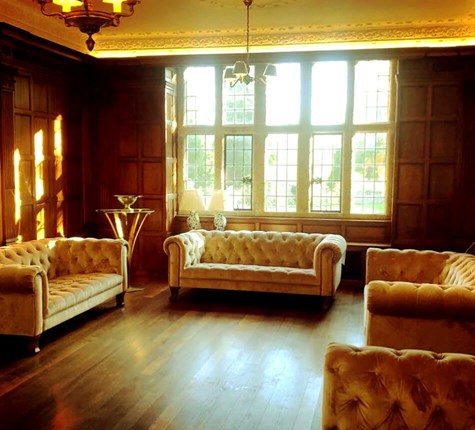
That all changed in the summer of 2008 when I found and fell in love with Wood. Not only was this gated mini country estate jaw-droppingly beautiful but it was also in need of complete renovation. It was well positioned yet secluded in mid Devon, located just one mile from the A30, the dual carriageway that bisects Devon and Cornwall. How hard could it be to install a hospital in a dilapidated mansion?The house had originally been built in 1905 for William Lethbridge, whose uncle had been the first president of the North Western Coal and Navigation Company based out of Lethbridge, Alberta, Canada (yes, they named a Canadian city the size of Exeter after him despite him never visiting Canada!). Lethbridge commissioned Thomas Mawson, the first president of the Landscape Architects Society, to design the gardens at Wood. Mawson invited his friend, the architect Dan Gibson, to design the house in the Arts and Crafts style. The house had remained in the same family until death duties forced its sale in the 1960s after which it became a hotel but by the 1980s it was abandoned and since then had fallen into disrepair. My first move was to contact a recently retired CQC inspector who had become a friend over the years. He very kindly came to look at Wood and I fully expected him to tell me that I was bonkers and that my plan was completely unfeasible, but he didn’t…
I then spoke to a commercial finance contact who approached the major lenders on my behalf to try to raise a mortgage for Wood. The only mortgage products available from any of the lenders at that time were highly toxic financial derivatives called ‘hedged interest rate swaps’. These were designed to protect the banks from any major fluctuations in the base interest rate. In October 2008 I resigned from my NHS consultant post oblivious to the impending financial storm. Almost immediately the credit crunch hit and I was paying far more for my mortgage than almost everyone else I knew. A drop in the base rate to 1% then 0.5% meant that everyone except me (and 2500 other business owners who had been mis-sold these products by the major banks) was paying less for their mortgage but I was paying considerably more and it was already a huge mortgage. The bank refused to renegotiate and also refused to lend because I was too ‘highly geared’ i.e. the interest repayments on the hedged swap would make further lending to develop the building too risky a proposition for the bank to countenance. So, I sold everything I owned (except my properties) and fixed the leaky roof and dry rot which was threatening to collapse priceless ornate ceilings throughout the property. I employed local craftsmen to restore dozens of beautiful leaded windows, installed central heating and I paid a medical spa ‘guru’ to visit the property who came up with some excellent ideas, many of which we have been able to incorporate into the plans.
I was advised by everyone I consulted that I would need to borrow money to move forward swiftly and finish the project within three to four years. But nobody would lend – it was the wrong time. Despite not being overdrawn my bank withdrew my overdraft facility, my credit card limit was halved and life became a struggle. I did as I had been advised and invested almost £100k on a business plan which was underpinned by a local firm of surveyors. We had weekly meetings which I distinctly recall involved coffee and biscuits and lots of talking but alas no action. It became painfully clear to me in 2011 that this money had been wasted when my bank yet again refused any form of lending despite a persuasive business plan. I was going backwards. (NB – when it comes to property development cash is king folks! If you borrow money to fund your development you will almost certainly have to use a large national firm who will be more expensive than using local contractors. You will be billed for subcontractors and for any delays even if they are not your fault. Not only will you need to pay your own quantity surveyor to supervise the project but you will also need to foot the bill for a second QS appointed by the lender to ensure that you’re not spending their money on whatever you like.)
No holidays, no new car, no CPD meetings, no investment whatsoever until further notice. I was a debt slave to the bank. To rub salt into the financial wound the bank approached me and suggested that one of the bank’s executives in London was looking for a property in Devon and that he had expressed an interest in taking Wood off my hands. All it would take was me signing a form to ‘break the hedge’ and the bank would charge me £960k for processing the paperwork and give me a bottom of market price for my property (for clarity the £960k was simply the bank’s fee for shredding the hedge document, I would not have seen my mortgage reduce by this amount – I felt like I had literally sold my soul to the devil). It was a lose-lose situation for me. I was working six full days a week in full-time private practice and at the end of every month there was nothing to show. All the bills and mortgages got paid… but it was often far too close for comfort. Wood was mothballed and I was stuck running flat out on a virtual financial treadmill with a building that I was unable to develop and couldn’t afford to sell.
Then six years after I had been mis-sold the hedged swap a glimmer of hope arrived in the post. It was a bullish letter from the bank with a small enclosure from the Financial Conduct Authority (FCA). The bank’s letter was basically full of legal bluster and self-righteousness “we’ve done nothing wrong bla bla bla” but the enclosure from the FCA told a different story. It basically said, “you have been mis-sold an inappropriate financial product by your bank, do not consult a lawyer as this will waste your money, sit tight we will rescue you.” Two and a half thousand small business owners like me had been sold hedged products around that time and many had lost their businesses and their homes. In 2008 the banks had known that a storm was coming and had come up with a perfect solution to keep them in Ferraris and champagne through the credit crunch by sacrificing some of their wealthier customers. I was one of the lucky victims who had managed to somehow remain solvent. The FCA were true to their word and I was eventually reimbursed for all the overpayments that I had been forced to make and even given 8% interest if I signed a clause agreeing not to sue the bank! I took the money after considering my options. The hedge was shredded and it had cost me nothing except six years of delay. I was older, wiser and considerably more cynical. I could now sell Wood, basically cut and run, and go back to a normal life of working out of private hospitals for the rest of my career or I could continue to pursue my dream. It didn’t take me long to decide. By my own stubborn logic, I decided that if I didn’t pursue my dream I would never know if it was going to work. If you don’t try, you’ll never know . . .
So, I ploughed the money straight back into the project. I built a new pragmatic team who were extremely focused on cost control and together we were determined to get the project to the finish line. Over the years my builder / project manager has become a close friend and I have become far more relaxed about the project. I cannot overstate the comfort factor of having someone that you implicitly trust looking after your interests. Every day he goes into battle with subcontractors asking them why this or that piece of kit has to be so expensive? The skilled artisans that comprise his team are all solid local grafters and understand the imperatives that fitting a 21st Century surgical centre into a grade II* listed Arts and Crafts mansion requires.
In late 2019 I moved my Cheltenham practice out of the beautiful regency house that I had owned there since 2004 and into rented rooms. The equity from the sale of the property was just enough to get us over the finish line at Wood. It also helped as a financial buffer when the COVID-19 pandemic hit.
When COVID struck I was unable to work clinically and suddenly had time to really focus on finishing the development at Wood. A vascular surgeon colleague who needed to relocate his practice away from the local private hospital approached me and is now sharing the Plymouth office which exists as a ‘branch’ of Wood MediSpa. My team redoubled their efforts and we finished the construction in November 2020.We were registered by the CQC in December 2020 and now have a fully functional mini-hospital with one operating theatre, two air handling units (with additional UVG air cleaning) providing 25 air changes per hour to our GA theatre and two-bay recovery. A patient lift extends from our surgery floor up to the six-bed inpatient ward. We have hundreds of yards of copper piping concealed behind the walls of the hospital quadrant of the building carrying oxygen, suction, medical air and our anaesthetic gas scavenging system (preventative maintenance contracts need to be in place for all these systems).
We opened on 20 January 2021 but had to use paper-based patient records initially as our rural internet speeds were too slow to support our paperless electronic hospital management system. This is being rectified imminently and soon we will have a state-of-the art electronic hospital with fast fixed-wireless broadband and a paperless hospital management software package with comprehensive electronic patient records including everything from web booking, CRM, restocking, scheduling, efficiency metrics to 3-D surface scans and photography.
We have already appointed some key staff members on a contract basis with other professionals working on a bank basis. Crucially I have avoided any equity partnership along the way and retain full ownership of the building. Financial interests have to be declared in the terms and conditions that all patients are sent. The fact that nobody would lend me a penny 12 years ago has served me well and means that I currently have no outstanding debt apart from the mortgage which is half-way through its 25-year term.
Queenswood Dental Clinic (which we are partners in) opened on 8 March 2021 following successful CQC registration – the dental practice’s CBCT scanner has proved very useful for assessing facial skeletal morphology in the context of preservation rhinoplasty, facial implants and genioplasty.
The demand from patients for aesthetic and reconstructive plastic surgery is currently extremely high because very little of this surgery was undertaken during the pandemic. Additionally, several colleagues have brought their practices to Wood because the local private hospitals are less able to accommodate their patients as they are committed largely to helping with NHS orthopaedic waiting lists.After opening the surgery centre the next phase is the development of the seven-bedroom hotel step-down facility under the same roof. Following that we plan to renovate the glasshouses and bring the gardens back up to their former glory.The journey is only just beginning . . . who knows what lies ahead!
COMMENTS ARE WELCOME



